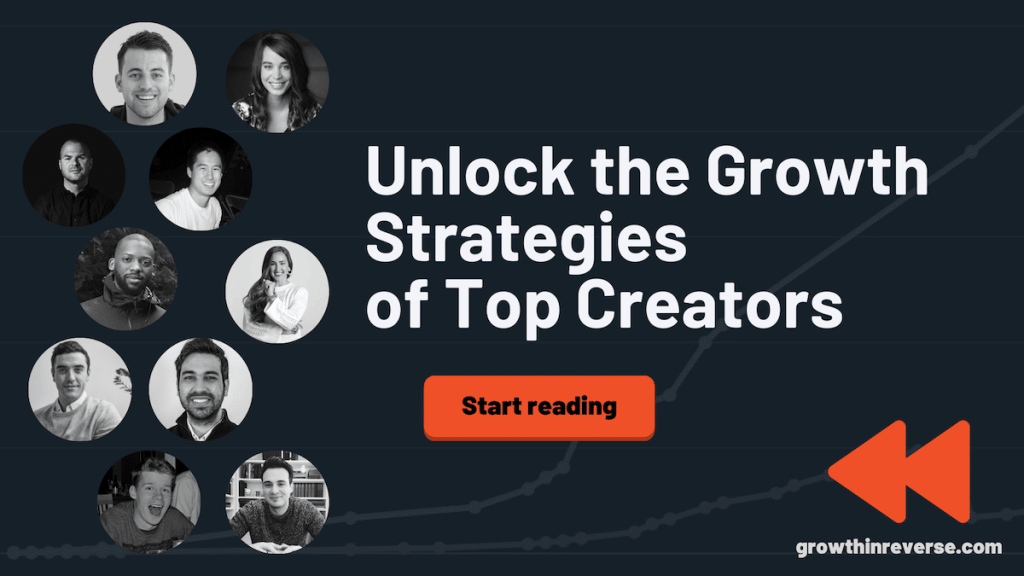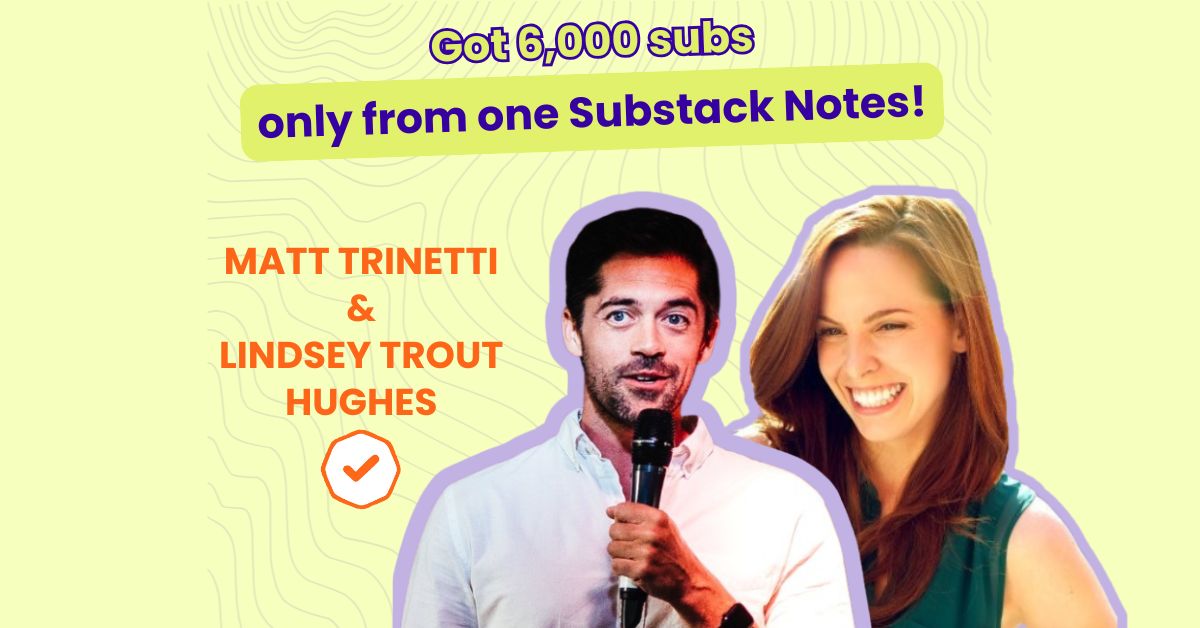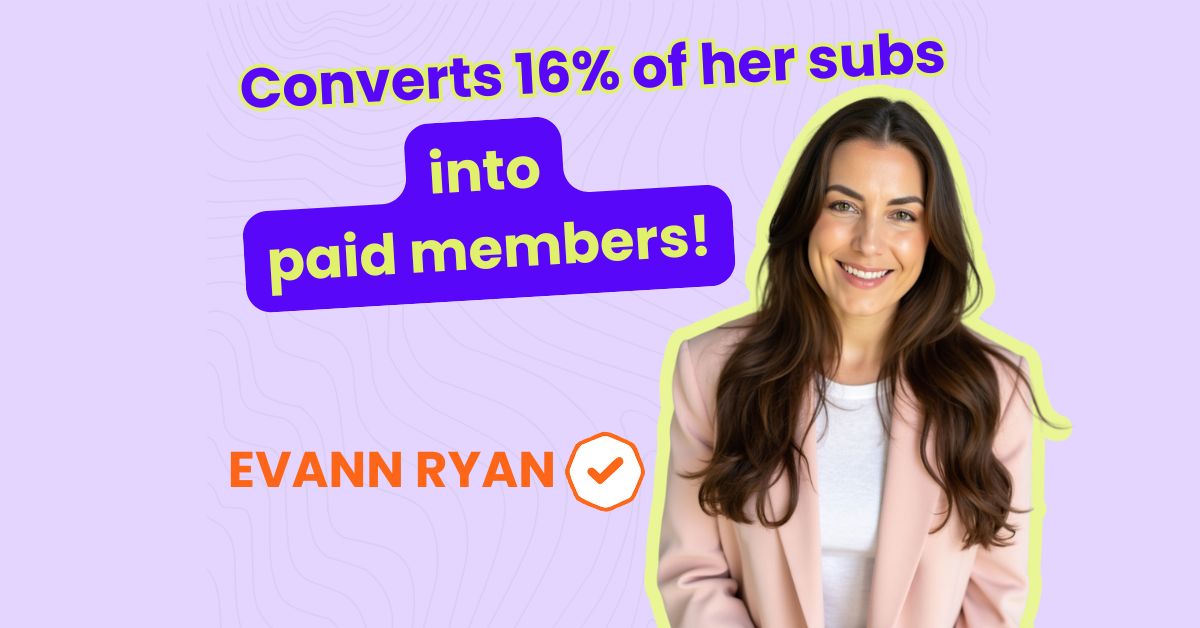Interview Date: May 07, 2023
Table of Content
CREATOR INTERVIEW
Chenell Basilio is the creator of Growth In Reverse, a great resource for newsletter creators. Every week, she shares a deep dive into how a top newsletter creator has grown to over 50k+ subscribers.
As a previous market research person, I know how hard it is to conduct high-quality research. But what is more difficult than the research itself is connecting the dots and creating a meaningful story out of all the findings.
In the deep dives, Chenell is not only revealing the growth dynamics of top newsletters but also turning them into actionable insights that are part of the bigger strategy. I think this is one of the main drivers of Chenell’s success in reaching 8K subscribers only in 5 months.
This time, I asked her reverse engineer her own growth. Let’s start!
NEWSLETTER IDENTITY CARD
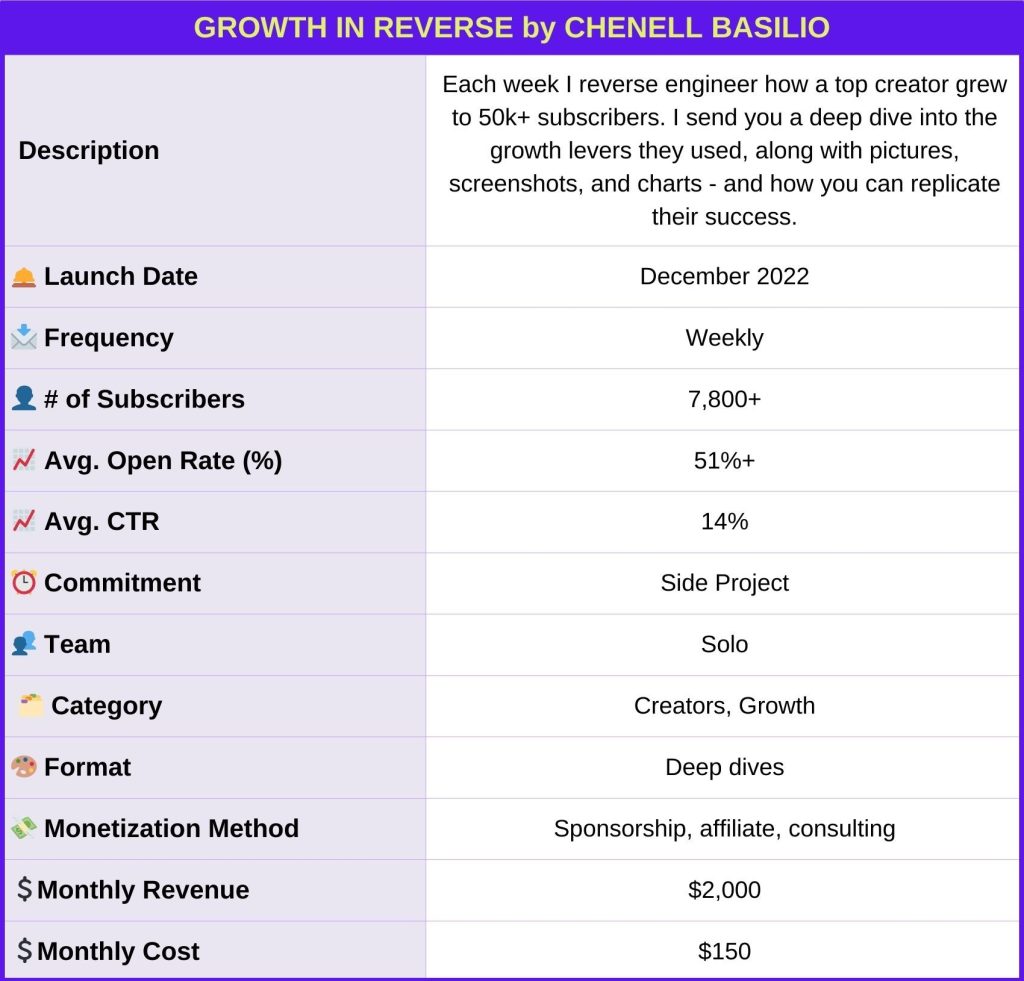
TOOL STACK
- ESP → ConvertKit
- Writing & Website → WordPress
- Idea Capture & Note taking → Apple Notes
- Design → Canva
- Growth → Sparkloop
- Payment → Stripe
- Forms → Tally
- X→ Twemex
MEET THE CREATOR
Welcome Chenell. Let’s start with getting to know you.
Hi, I’m Chenell. I graduated from Arizona State University in 2009, during the height of the recession. There weren’t many jobs at that point, so I waited tables for a while. I ended up getting a job at AAA (the roadside assistance company) and started in their Travel department helping people book car rentals and hotels. I was good at it because I was quick with computers.
Eventually, I wound up working in their e-business department running their paid ads for a few years. In 2017, I had saved up around 8 months of expenses and left my job to help clients grow their businesses with Google and Facebook ads.
START
What is Growth In Reverse all about?
Growth in Reverse is all about figuring out how some of the top creators got to where they are. We often see what they’re doing now to keep growing, but that is not usually what got them to where they are. So each week, I spend about 20-25 hours reverse engineering how a top creator has grown to over 50k+ subscribers.
I go through all of the interviews they’ve done, podcasts they’ve recorded, and then dig into their past tweets, posts, emails, and more to find the growth levers they’ve used to get to where they are.
Why and how did you decide to start Growth In Reverse in the first place?
I’ve been helping people build their online businesses with paid ads for years, but I always wondered how you could do that without paid traffic. Then I started learning about people like Mario Gabriele of The Generalist, who was making over $300k a year as a mostly solo creator.
I had to figure out how someone with seemingly no digital marketing experience could build an audience like that so quickly.
So, I started looking into the details and reverse engineering how he did it.
I thought it would be cool to share those stories with other people. And that’s how Growth in Reverse was born.
Can you take us through how you build the first version of Growth in Reverse?
The only big change is that the growth timeline charts are more professional now. In the beginning, it was a screenshot of Google sheets chart 🙂
Other than that, the content might be more refined since I’ve learned a lot about newsletters since starting.
How did you gain your first 100 subscribers?
My first 100 subscribers were mostly from X. As with most things, I only told my wife about this at the beginning.
I updated my X profile to be all about Growth in Reverse (similar to how it is now), and just started commenting on other people’s tweets.
GROWTH
Which growth channels do you mainly use?
Cross-promotions, Sparkloop Upscribe, and X/LinkedIn.
Upscribe and X/LinkedIn are more impactful than cross promos, but those two can swap percentages depending on the week.
What are the most effective growth strategy & channels?
X and LinkedIn are the most consistent ways I get subscribers. I wish I had more time to truly master them, but the deep dives take a lot of my week to complete.
I write a thread each week covering the previous week’s deep dive. And then I repost that onto LinkedIn.
Every Saturday, I tease the upcoming deep dive. Those posts usually get me between 80-150 new subscribers every week.
I spend a LOT of time engaging on X, and am starting to do the same on LinkedIn. I think it’s imperative to comment on other’s posts if you really want to grow on X.

Lately I’ve been taking Ship 30, and while I’m wildly inconsistent with it, it’s taught me a lot about the kinds of ideas I can try in the future.
How did your growth strategy evolve in parallel to your subscriber list growth?
Aside from people sharing the content and newsletter, X has been the most consistent. It’s hard to say, I’m still doing a lot of what I was doing in the beginning as it was only 5 months ago 🙂
How do you leverage the referral program? What are your learnings?

My referral program is centered around the section in my newsletter called the Community Spotlight. If you refer 10 people, I’ll give you a shout-out in that section. Each of those is now getting around 50-80 clicks every week, so they get a lot of value in return as well.
I’m using Sparkloop for the referral program at this point.
The referral program is kind of hit or miss. In the beginning, a lot of people used it, but now it’s not as regular. I think it’s worthwhile for sure, but don’t rely on it to drive a ton of subscribers consistently.
You direct your subscribers to your website in the newsletter to read your deep dives. Did you start both with newsletter and website together from the beginning? What is the strategy behind it?

They were started at the same time. The deep dives are often 4-5k words, so they would likely get cut off by typical email clients. Plus, having them on a website allows for some kind of SEO to eventually take hold – although I don’t get much traffic from that yet.
Regarding growth efforts, what would you do differently if you had a chance to start over?
I’d reach out to bigger accounts earlier and just have conversations. You never know when they’ll put together a recommendations thread on X and randomly include you, or shout you out on a podcast, etc.
I’d also start using Upscribe earlier or another recommendations platform. It’s been a big driver of growth so far.
What is your growth strategy on your way to 10,000 subscribers?
Continue putting out content that people find valuable and want to share.
Word of mouth is probably the biggest driver of new signups at this point, so as long as I keep doing more of the same I should hit that goal in a few months.
MONETIZATION
How do you make money with your newsletter? Can you share the breakdown of your revenue streams?
- Sponsorships: 40%
- Consulting: 35%Helping people with their newsletters and conversion rate optimization to improve subscriber rates. These clients came from Growth in Reverse, or came after someone hearing I’m really into newsletters now.
- Upscribe: 15%
- Affiliates: 10%I have clients outside of the newsletter which is what really pays the bills though.
When and how did you earn your first dollar with your newsletter?
I think it was the first sponsor I got on February 3rd. I had 1,800 subscribers at that point. A past friend reached out on X DMs asking what I would charge for a sponsorship. I essentially made up a price and went with it 🙂
How did your monetization strategy evolve in parallel with the growth of your subscriber list? Could you take us through your monetization journey?
I’m pretty new to the monetization side of things. I have sponsors, Upscribe, affiliates, and consulting going on now. I plan on helping people with custom audits for their newsletters to help with growth.
Affiliate income is from courses/products that the people I do deep dives on sell. I include links to them and some people are interested enough to go ahead and purchase.
How does your sponsorship system work? How do you find sponsors?
I wrote a thread about this here:

I’m lucky as so far they’ve all been inbound. People reach out wanting to book a spot or they can buy through my sponsor page directly, which is nice. Removing friction in the process has helped a lot.

How much did you charge for the first sponsorship? Then how did you manage pricing along time?
The first one was $100, and then I’ve been slowly increasing it since then. The Who Sponsors Stuff calculator is fantastic for helping get an idea around what you should be charging.
What are your plans to increase your revenue?
I plan to launch a course eventually but want to get a better grasp on what specific things people in my audience want help with. Other than that and raising my sponsorship prices, I’m really not sure.
E-MAIL SERVICE PROVIDER
Why did you choose ConvertKit? Pros and cons?
I’ve been using ConvertKit for years for my own stuff and with clients, so it was just the most familiar option. For someone just getting started it’s probably overkill for a simple newsletter though.
SYSTEM & PRODUCTIVITY
What is your typical weekly process from creating to releasing a new issue?
A typical week usually looks like this:
- Monday/Tuesday/Wednesday – 4-5 mile walks while listening to podcasts and interviews they’ve done
- Thursday – I start writing and usually outline most of the post
- Friday – I go back through all of the written content and find more evidence to support what I’ve found, or add new things to it.
- Saturday – I’m usually writing until about 5pm when my wife tells me I’m spending too much time on work, so I close my laptop.
- Sunday – I wake up around 5am to finalize the post, write the email and hit publish. Then I’ll create the podcast playlist for the next week.
It’s a lot, but I enjoy it.
NEWSLETTER EXPERIENCE
How did writing Growth in Reverse contribute to your life professionally & personally?
“The response to Growth in Reverse has been amazing and truly humbling. People I’ve looked up to for years are reaching out and telling me how awesome it is. So that’s really cool. But on a mental health aspect it’s done wonders.”
I have a hard time sitting still and focusing on something for too long – so the fact that I can get a lot of research in while I’m on a walk or doing yard work is really critical to my being able to stick to it.
What is the most challenging part of writing a newsletter and how do you handle it?
The most challenging part for me is pulling the story out of all of the research. Sometimes, Friday rolls around and I feel completely lost as to what the main points are. I inevitably end up figuring it out, but that makes the process a little stressful.
Can you tell us one mistake you made during your newsletter journey?
A few days after I set up the Sparkloop referral program, something on the technical side of my site ended up changing, and it broke all of the referral links. So whenever someone shared their link it went to a 404 page. I didn’t notice this was happening for a few days. It wasn’t a great first week of referrals to say the least.
FUTURE
What is next on your newsletter journey?
We might have to consult the magic 8-ball on that one. I’m really not sure. For now I’m loving doing weekly deep dives and hearing how much they are helping people with their own newsletters.
RECOMMENDATIONS
What would it be if you had the right to give one piece of advice to aspiring newsletter creators?
Just get started.
The number of years (yes, years) I wasted sitting around wishing I had this or that person’s business is ridiculous. If you’re interested in something, just start writing or creating that thing. You’ll make laughable mistakes in the beginning, but the best part is those make for really great tweets and stories down the line.
What are your favorite newsletters that you can’t wait for the next issue?
Oh man, there are way too many to name:
Alex from The Steal Club does an incredible job curating the wild world of X and audience building.
Katelyn Bourgoin with Why We Buy – really interesting (science-backed) takes on marketing and branding.
Jay Clouse always has really insightful takes in the Creator Science newsletter.
Louis Grenier from Everyone Hates Marketers always has a spicy take on things I didn’t know needed a spicy take.
Eve Arnold has a newsletter where she shares experiments and how to be a successful part-time creator.
Thank you so much, Chenell. Looking forward to continue learning from your deep dives and grow together.
Where to find Chenell Basilio and her work
